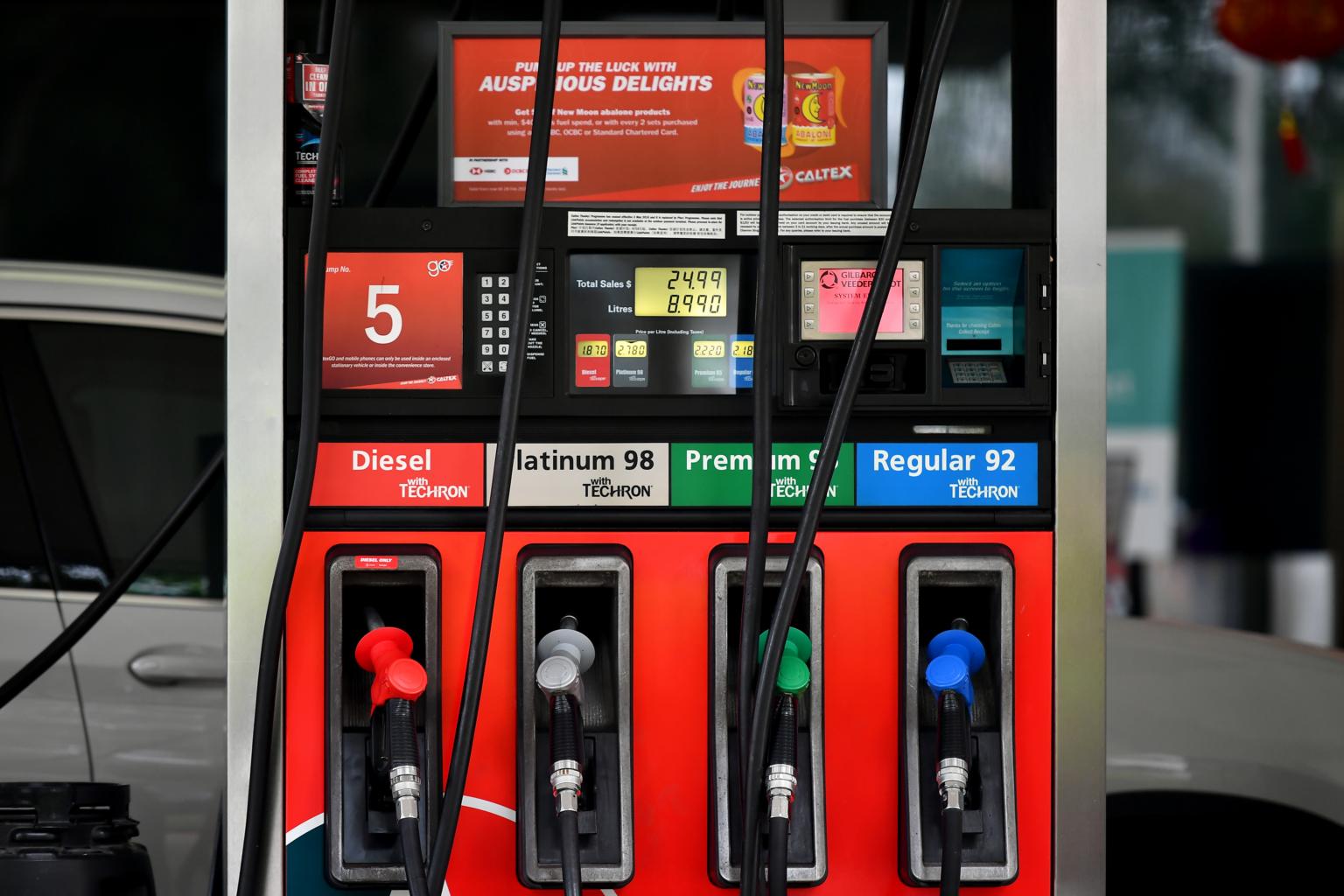Indirect exposure to Russia-Ukraine war poses key risks to Singapore economy, MAS says
Sign up now: Get ST's newsletters delivered to your inbox

The bulk of Russian inputs embedded in Singapore's exports is in refined petroleum products and transport services.
ST PHOTO: LIM YAOHUI
Follow topic:
SINGAPORE - Russia may not be one of Singapore's major trading partners, but the disruption to its exports because of its war with Ukraine can still hurt the Republic's growth prospects.
This is because Russia's role in the global economy is more as a major energy supplier, said the Monetary Authority of Singapore (MAS) in its macroeconomic review report released on Thursday (April 28).
MAS said that while Singapore's direct trade exposure to Russia is minimal, the European nation accounts for more than 10 per cent of global crude oil and natural gas production.
Uncertainty over energy supplies from Russia has sent oil prices soaring above US$100 a barrel, driving up inflation worldwide and indirectly putting Singapore's economic outlook at risk by pushing up production costs and consumer prices.
Aside from the effect on prices, there are other channels of indirect exposure through which disruptions to Russia's exports could have knock-on effects on Singapore, MAS said.
Most of Russia's energy supplies are imported by China and European Union - both major trading partners of Singapore.
MAS said Singapore's key export partners with significant exposures to Russia may suffer income losses, which in turn may reduce demand for Singapore's exports.
The top five countries and regions with significant final demand originating from Russia were the euro zone, China, the United States, Japan and Britain. Meanwhile, Singapore is more vulnerable to a fall in final demand in China, followed by the US and the euro zone, MAS said.
Indirect exposure also comes through supply chain linkages, as goods imported from other countries may contain Russian components that are used in Singapore as intermediate inputs for products that are ultimately exported.
MAS estimated that the size of Russian inputs embedded in Singapore's total imports is around US$5.5 billion (S$7.6 billion), accounting for 1.5 per cent of Singapore's total imports and 1.5 per cent of Singapore's gross domestic product.
From an industry perspective, the bulk of Russian inputs embedded in Singapore's exports is in refined petroleum products and transport services.
Energy-related inputs account for a particularly high share of total input requirements in the petrochemical (40.3 per cent), air transport (31.5 per cent) and water transport (14.4 per cent) industries.
Compared with the 1973 global energy crisis, Singapore's dependence on energy has risen from 1.3 per cent of overall inputs to 3.8 per cent in 2019, said MAS.
The increase is due, in part, to greater downstream demand for refined petroleum products used as feedstock in the domestic petrochemical industry, which has expanded with the development of petrochemical complexes on Jurong Island over the decades.
Meanwhile, oil dependence in the transport industries has also increased substantially.
"Higher energy prices will raise production costs in these industries significantly, with firms potentially cutting supply and passing on the cost increases to other intermediate stages of production," MAS said.
Thus, the duration and intensity of economic spillovers from the Russia-Ukraine conflict are key risks for Singapore, MAS said. The impact of the war on the economy may be amplified if higher inflation, tighter financial conditions and heightened uncertainty restrain domestic consumption and investment.

